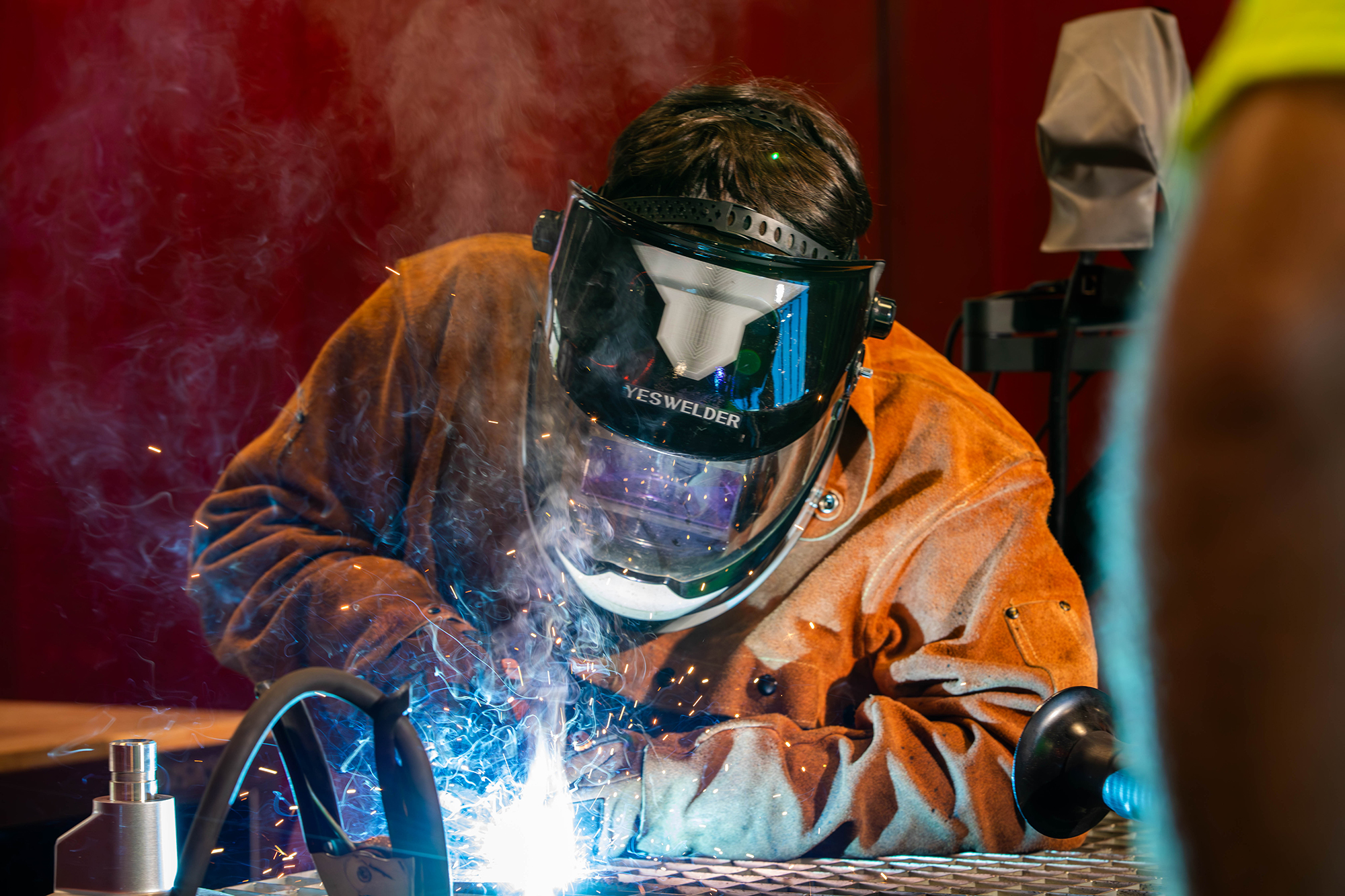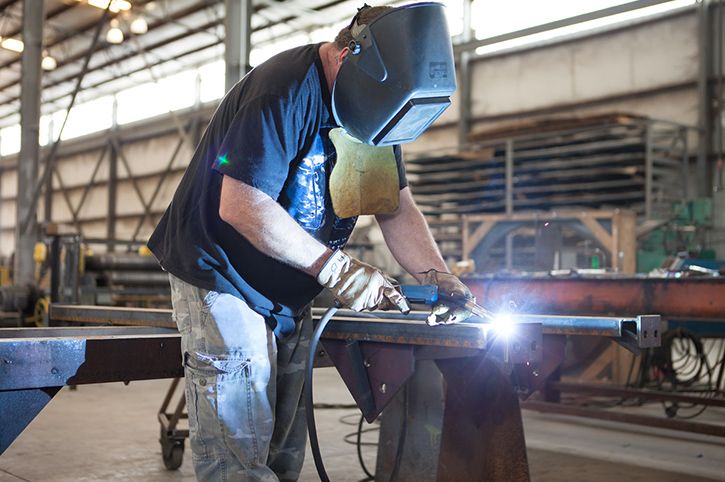Usual Welding Fixing Issues and How to Address Them Successfully
Welding fixings often run into a series of problems that can threaten the honesty of the final product. Typical problems consist of poor penetration, porosity, and imbalance, to name a few. Each issue presents special difficulties that call for details methods for resolution. Comprehending these issues is necessary for welders aiming to boost their end results and abilities. This conversation will certainly discover these usual welding repair work problems and efficient techniques to address them.
Poor Penetration
Poor penetration takes place when the weld steel fails to fully fuse with the base product, resulting in weak joints and potential structural failings. This concern often stems from not enough warm input, wrong electrode angle, or improper welding rate. Welders might experience poor infiltration because of a mistake of the necessary specifications for a specific product thickness or kind. Furthermore, contamination on the base product's surface area can hinder efficient bonding, aggravating the problem. To resolve insufficient infiltration, welders ought to ensure suitable settings on their devices and keep a clean work surface area. Normal inspection of welds is recommended to recognize any shortages early, permitting prompt adjustments and the prevention of jeopardized architectural honesty in welded settings up.
Porosity
Porosity is a typical flaw in welded joints that manifests as little gas bubbles trapped within the weld steel. This problem can compromise the honesty of the weld, causing lowered strength and possible failure under stress and anxiety. Montana Mobile Welding and Repair Welding. Porosity usually arises from contamination, moisture, or inappropriate welding strategies, which permit gases to escape into the molten weld pool. To address porosity, welders must ensure appropriate surface preparation, preserve a tidy workplace, and make use of ideal welding specifications. Furthermore, picking the right filler material and protecting gas can alleviate gas entrapment. Regular assessment and testing of welds can assist determine porosity early, assuring prompt corrective actions are taken, consequently protecting the quality and reliability of the bonded framework
Imbalance
Imbalance in welding can develop from various elements, consisting of inappropriate configuration and thermal expansion. Comprehending the source is essential for effective resolution. A number of improvement strategies are offered to realign parts and assure structural integrity.
Reasons of Misalignment
Welding imbalance often originates from a selection of underlying issues that can jeopardize structural integrity. One main cause is incorrect fit-up of components prior to welding, which can bring about spaces and irregular surface areas. Variations in thermal growth during the welding procedure can likewise result in distortion, especially if the materials being joined have various coefficients of development. In addition, poor fixturing and securing may fall short to hold elements firmly in position, resulting in activity during welding. Inadequately maintained equipment, consisting of welding devices and devices, might present disparities in the weld bead, additional contributing to imbalance. Operator error, stemming from inadequate training or experience, can likewise play a considerable duty in producing misaligned welds.

Improvement Methods Available
Addressing misalignment successfully needs a combination of rehabilitative methods customized to the certain problems available. One typical approach is using fixtures or jigs to hold parts in the proper setting during welding, guaranteeing regular placement. Additionally, pre-heating the materials can help minimize distortion and enhance fit-up. For substantial misalignment, mechanical realignment strategies, such as using hydraulic jacks or clamps, can be utilized to remedy the placement before welding. Post-weld warmth therapy might likewise be required to alleviate stress and anxieties triggered by misalignment. Finally, careful assessment and adjustment during the configuration phase can avoid imbalance concerns from ending up being considerable troubles, promoting a smoother welding procedure and enhancing total structural integrity.
Distortion
Distortion is a typical difficulty in welding that can develop from different elements, including irregular home heating and air conditioning. Understanding the root causes of distortion is important for implementing efficient prevention strategies. Addressing this problem not only enhances architectural integrity however likewise boosts the total quality of the weld.
Reasons of Distortion
When subjected to the extreme warmth of welding, materials typically go through changes that can lead to distortion. This phenomenon largely develops from thermal growth and contraction throughout the welding process. As the weld location heats up, the material broadens; upon air conditioning, it acquires, which can develop internal stress and anxieties. On top of that, irregular heating across a work surface can intensify these stress and anxieties, resulting in warping or bending. The kind of product also plays a significant function; steels with differing thermal conductivity and coefficients of development may respond differently, resulting in unforeseeable distortions. Bad joint design and welding insufficient fixturing can contribute to imbalance throughout welding, enhancing the chance of distortion. Comprehending these causes is crucial for effective welding fixing and avoidance approaches.
Avoidance Techniques
Reliable prevention techniques for distortion during welding concentrate on regulating warmth input and making sure correct joint design. Maintaining a consistent warmth input assists to reduce thermal development and tightening, which can lead to distortion. Utilizing methods such as preheating the work surface can additionally reduce the temperature level slope, advertising uniform home heating. Furthermore, picking ideal joint styles, such as T-joints or lap joints, can improve stability and decrease tension concentrations. Carrying out appropriate fixturing to secure the workpieces in area better help in preserving positioning during the welding process. Staggered welding sequences can distribute warmth a lot more equally, avoiding localized distortion. By using these methods, welders can considerably reduce the probability of distortion and boost the overall high quality of their welds.
Splitting
Cracking is an usual problem come across in welding fixings, typically arising from numerous variables such as improper air conditioning rates, product selection, or inadequate joint preparation. The event of cracks can considerably jeopardize the honesty of the weld, leading to potential failings during procedure. To resolve this issue, welders must initially evaluate the origin, making sure that materials work and appropriately selected for the details application. In addition, controlling the cooling price throughout the welding procedure is vital; quick air conditioning can cause stress and cause cracking. Proper joint design and prep work also add to decreasing the risk. Carrying out these strategies can boost weld high quality and sturdiness, ultimately lowering the likelihood of splitting in ended up weldments.

Insufficient Combination
A significant concern in welding fixings is insufficient fusion, which occurs when the weld metal does not effectively bond with the base product or previous weld passes - Belgrade. This problem can lead to weak points in the joint, potentially jeopardizing the integrity of the welded structure. Aspects contributing to insufficient combination include insufficient warm input, improper welding technique, and contamination of the surface areas being joined. To address this problem properly, welders must assure appropriate pre-weld cleansing and surface area prep work, as well as readjust their welding criteria to accomplish ample penetration and combination. Routine assessment throughout the welding procedure can also help determine insufficient fusion smaw welding early, allowing for timely rehabilitative actions to improve the total top quality of the weld
Overheating
While welding repair services can boost architectural honesty, overheating presents a substantial obstacle that can lead to material destruction. Excessive warmth throughout welding can modify the mechanical residential properties of steels, leading to minimized strength, increased brittleness, and bending. This sensation is particularly crucial in high-stress applications where structural reliability is critical. Identifying getting too hot can include aesthetic examinations for discoloration or distortion, as well as keeping track of temperature level throughout the welding procedure. To alleviate the threats linked with overheating, welders should employ ideal methods, such as managing warmth input, changing travel speed, and making use of appropriate filler materials. In addition, implementing pre- and post-weld warmth therapies can aid recover material homes and enhance the general high quality of the repair work, making sure lasting efficiency and safety.
Regularly Asked Inquiries
What Are the Usual Indicators of a Welding Problem?

How Can I Evaluate My Welds for High quality?
To check welds for top quality, one can make use of visual inspections, ultrasonic testing, and radiographic techniques. Each technique guarantees structural honesty, identifies problems, and confirms adherence to specified criteria, inevitably improving the dependability of the welded joints.
What Safety and security Preventative Measures Should I Take While Welding?
When welding, one need to focus on safety by putting on ideal personal safety equipment, guaranteeing my latest blog post correct ventilation, securing combustible products away, keeping a clean work space, and knowing environments to protect against mishaps and injuries.
Can I Fix a Weld Without Remodeling the Entire Joint?
Fixing a weld without redesigning the entire joint is possible, depending on the damages (Belgrade Welding). Methods such as grinding, adding filler product, or using a welding procedure can successfully address details defects while maintaining the surrounding framework
What Equipment Are Essential for Reliable Welding Repair Works?
Important devices for effective welding repair services include a welding equipment, wire brush, mill, safety equipment, clamps, and filler products. Each device plays a crucial function in ensuring quality and security during the repair service process. Porosity normally arises from contamination, dampness, or inappropriate welding methods, which enable gases to leave into the molten weld pool. Improperly conserved tools, including welding makers and devices, might present disparities in the weld grain, more adding to misalignment. When subjected to the intense heat of welding, materials usually undertake modifications that can lead to distortion. Cracking is a typical concern come across in welding repair services, typically resulting from various aspects such as incorrect cooling prices, material selection, or insufficient joint preparation. A considerable concern in welding repair services is insufficient combination, which happens when the weld metal does not adequately bond with the base material or previous weld passes.